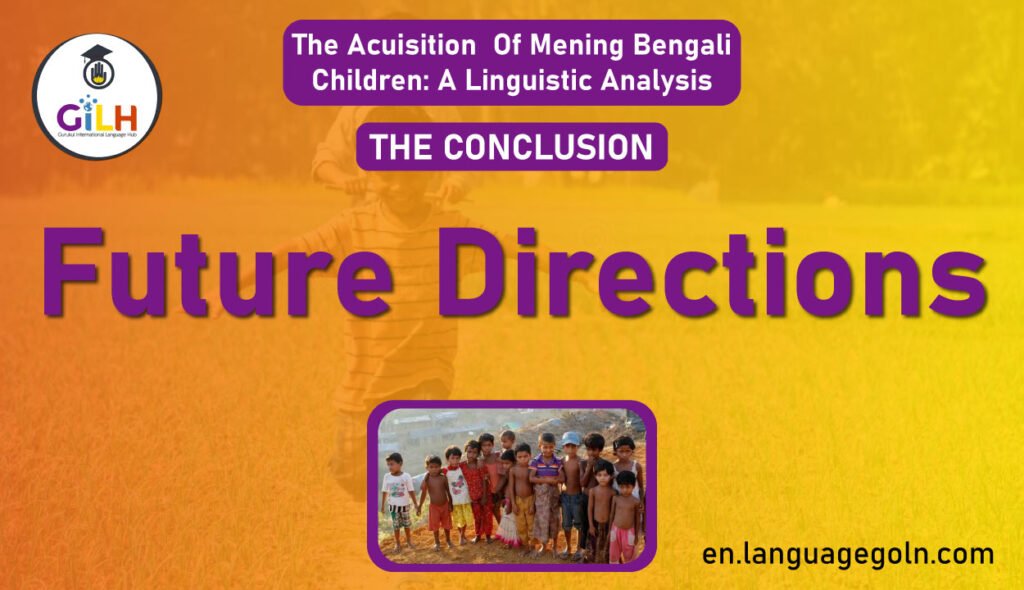Today our topic of discussion is – Future directions
Future directions
This work provides an opportunity to build on the shared experiences and narratives of Bengali spoken young children in an attempt to explore their meaning acquisition process. For example, a child becoming happy and jumping with joy to see his working parent home at the end of the day is an untold expression that he missed them all day long.
Without genuinely understanding and integrating the child’s surrounding environment, these attempts to sort out how meaning is acquired by the young children remain futile and worthless. Family structures and factors like parental interaction with the children, language use, surrounding atmosphere continue to imprint on the language development of any child.
A comprehensive support system can provide the necessary environment to the young minds ready to acquire their first language with all its essences. Otherwise, under developed communicative ability will become a natural outcome.
With the appropriate surrounding environment and positive reinforcements (sometimes may be negative ones too) help to end up in well structured language development as well as successful meaning expressions. To create a positive surrounding environment, initiative has to be taken from the family members and relatives.
Children depend more on the parents and his relatives than anyone else, so they should also think about the child and his successful language growth. This might
be too optimistic, but I believe, efforts taken from the family at the very beginning can create opportunities for the young first language learners to get proper language input.
Another project that surfaced from this study is the possibility of providing a thorough analysis of the pragmatic use of the acquired meaning in everyday life of a child.
Though discussion in meaning acquisition also covers issues like language in use too, but linguistically exploring the pragmatic use of child language can be another interest to study. Moreover, in this acquisition develops well after 18 months along with other developments like combining words, working in joint attention and cognitive developments.
So a scope is already created here to further study the time period before this when the child depends mostly on non-verbal communications to interact with others; or the time period after that (5 years) when child’s meaning acquisition develops and reaches adults’ language use level.
When I was doing this research, I found that child language growth is one of the most vital developments in a child’s life and how the meaning making process takes place is a significant part of it. In this sense, a study that covers how meaning acquisition takes place is also very important for trying to explore one of the greatest mysteries of humankind, the language development process.
Thus, similar studies to investigate this wonderful journey will also be very significant and helpful for researchers’ interested in and already working in this area.
See more

